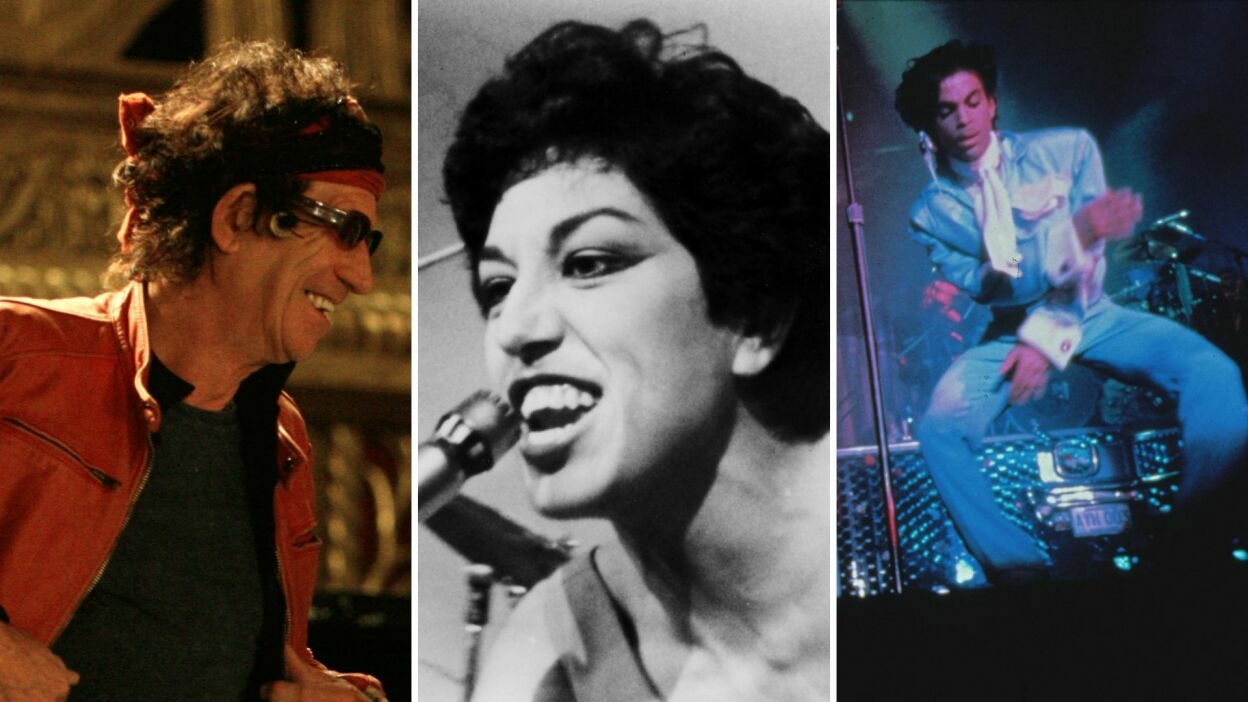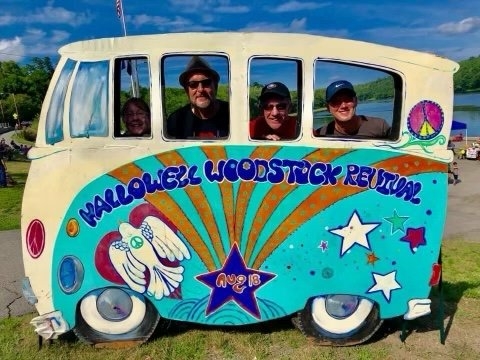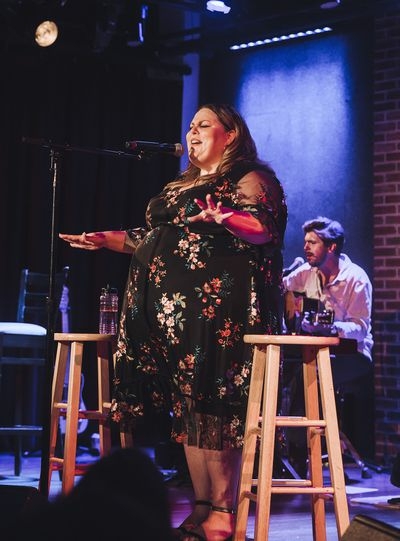From right: Ace Pro of The Homies and mastering engineer Jeff Dickerhoof visit studio designer Greg Geddes in his Atmos-enabled home studio.
The most beautiful things happen when creativity and technology embrace like the lovers they should be. But here in Louisville, where the art of music knows no borders, there is a dearth of recording studios that offer the kind of production and technique that will yield recordings that will satisfy newly educated listeners around the world.
As if struck by Cupid’s arrow, music lovers are falling for immersive audio, thanks to the streaming platforms and listening devices that provide this arena. Join fans who put in their AirPods Pro and listen to Bryson Tiller and Diddy’s “Gotta Move On,” Vory’s Lost Souls, or Gee’s EST album Last Ones Left via Apple Music or Tidal. The songs were mixed for Dolby Atmos, a magically beautiful technology exported from the film industry. You’ll walk away from your personal listening session knowing something else happened and yearning for more of those mesmerizing sounds, even if you can’t identify the root cause.
What is immersive audio?
So let’s get down to it and explore what immersive audio actually is. No matter how many tracks a track has originally, the stereo mix collapses them all down to two tracks, left and right. To see also : Top Netflix Movies and Shows: What’s Trending On June 22, 2022. Meanwhile, the Atmos mix supports 128 channels, and each track is individually located and manipulated by the mixer.
A mastering engineer has a leadership role as he must know the ins and outs of the technology and have the expertise and creativity to use that technology. But they don’t work alone. An artist listening to their own music in an Atmos-enabled, 7.1.4 surround sound environment can provide feedback to the mastering engineer, indicating their preferences, which features are emphasized and where the tracks are located. “Let’s try to put the hi-hat here and the kick there,” you might say. Ultimately, the listener can experience the music as the artist intended, immersed in three-dimensional sound.
A well-crafted Atmos mix has textures, layers, and volume dynamics that are less noticeable in stereo versions.
Where did immersive audio come from?
A year ago on May 17, Apple Music announced that big changes were in the works, stating, “Apple Music brings industry-leading audio quality to subscribers with the addition of Spatial Audio with support for Dolby Atmos. Surround sound gives artists the opportunity to create immersive audio experiences for their fans with true multidimensional sound and clarity. Apple Music subscribers will also be able to listen to more than 75 million songs in lossless audio – just as the artists created them in the studio. These new features will be available to Apple Music subscribers starting next month at no additional cost.”
Very few people Probably understood what all that meant. Did this word salad promise something substantive for the general populace?
While Spotify dominated the market, capturing 32% of streaming listeners worldwide, Apple Music promised to be the channel for better listening experiences, and they didn’t lie. Their leadership in this audio category, the quality-driven audio space they share with Tidal, Amazon Music and Qobuz, syncs with the proliferation of new listening products designed for surround sound. To see also : The 7 best things to help you discover new music. New speakers, soundbars, receivers and even multi-brand earbud models (Apple, Beats and Sony) support immersive listening.
You may have heard—or have heard—a naysayer dismissing immersive sound as a fad. But we can expect a comeback when the tides of change begin. The thing is, immersive sound has been with us for a long time, we use it in movie theaters where the audience is not limited to a stereo experience. In the cinema, sound comes from everything around you. This is Atmos.
Louisville studio designer Greg Geddes has followed the evolution of surround sound since its inception. Signed to Phillips Records at age 19, the musician has released albums with his band Hello People and toured with Todd Rundgren, who boldly skipped his Rock & Roll Last year’s induction into the Hall of Fame (“Fans have virtually no power to influence who gets into the Hall.”). In 1980 he went to work for Modern VideoFilm in Los Angeles, transferring film to videotape. From there, Geddes moved to Chase Productions, where he did archival restorations, including remixing “Gone With The Wind” using early Dolby technology.
Building his reputation on his musical artistry and decades of stellar work in California post-production houses, today he designs Atmos studios, and his current project is overseeing the construction of the two Atmos rooms he designed for Wildtracks in Burbank, California. Wildtracks is a Hollywood post-production audio facility specializing in television, theatrical marketing and commercials. The company is responsible for sound on “Breaking Bad,” “Ozark” and “The Good Wife.”
“The Dolby Atmos Production Suite renderer that was available for music had a lot to do with the labels being able to rent,” Geddes said. “Two years ago, the studios in Nashville and Los Angeles were suddenly flooded with catalogs that were put into Atmos. … The original Atmos renderers were designed for movies for a three-man mix on a dub stage. They were expensive. … Then about a year ago, the people at Dolby made it possible to mix in Dolby Atmos with Pro Tools Ultimate with panners specifically made for music.”
Advances have come fast and hard, and now Atmos post-production work hardly needs any equipment. Just a laptop.
Immersive audio and Louisville’s music scene
So how does this all tie into the Louisville music scene? Currently, at least four Louisville artists are constantly creating new music mixed for immersive sound: EST Gee, Bryson Tiller, Vory and Jack Harlow. Thanks to the strict hierarchy that controls the flow of information in the entertainment world, commercially successful artists like these are attuned to industry trends and shifts, so they know that Atmos mixes are not optional. But what should Louisville artists do if they want to compete in sound quality with the big stars?
The trick is to find an Atmos-enabled studio where you can book time.
Geddes explained what an Atmos-enabled environment is when describing his home studio:
“It’s an Atmos studio because I have a software license for the Dolby Atmos renderer and I’m using Pro Tools Ultimate with that,” Geddes said. “And mainly because I have a lot of speakers. It’s a 7.1.4 Atmos environment with speakers in their logical places, but most importantly, I can take all the skills I’ve learned working in multi-format surround sound post-production and apply them to my first love — music.”
Finding such a place locally will be a challenge right now. There are no studios in Louisville that market themselves as Atmos. One reason could be the financial investment in speaker systems required to optimize for Atmos; others could be doubts about whether there is a market for immersive audio production here in the city.
The fact is, Louisville is behind the times when it comes to audio technology. Dolby’s list includes a cluster of Atmos-enabled studios in Nashville, with Sweetwater Studios in Fort Wayne, Indiana, another nearby.
DeShawndra Ray, founder of the production company 7 Ray Media and manager of Bblasian and Cam Harris, has learned all aspects of the local music industry, first as an artist himself and more recently as an artist manager. Ray has good points of comparison, having invested a lot of time in Los Angeles, Atlanta and Nashville, where his clients shoot.
Ray noted that the lack of availability of Atmos-enabled studios and the small number of Atmos-savvy artists and engineers is a sign that the local music industry needs to employ a concerted strategy if it is to continue to grow: “Arts funding and tax credits are targeting the music scene seems like part of the answer, but it’s more complicated than that. If the music industry followed the bourbon industry’s plan, united through organization, built a lobby, state and city officials would hear us. If we wanted to effectively communicate the economic benefits of fully building the music sector, Lousiville would become the music town it was meant to be.”
Deep structural changes won’t happen overnight, and some artists won’t wait for a foundation of support to come together. They will take matters into their own hands. •
Keep Louisville interesting and support LEO Weekly by subscribing to our newsletter here. In return, you’ll receive priority news and the latest information on where to eat, drink and hang out in Derby City.
Follow us on Facebook, Twitter and Instagram.




